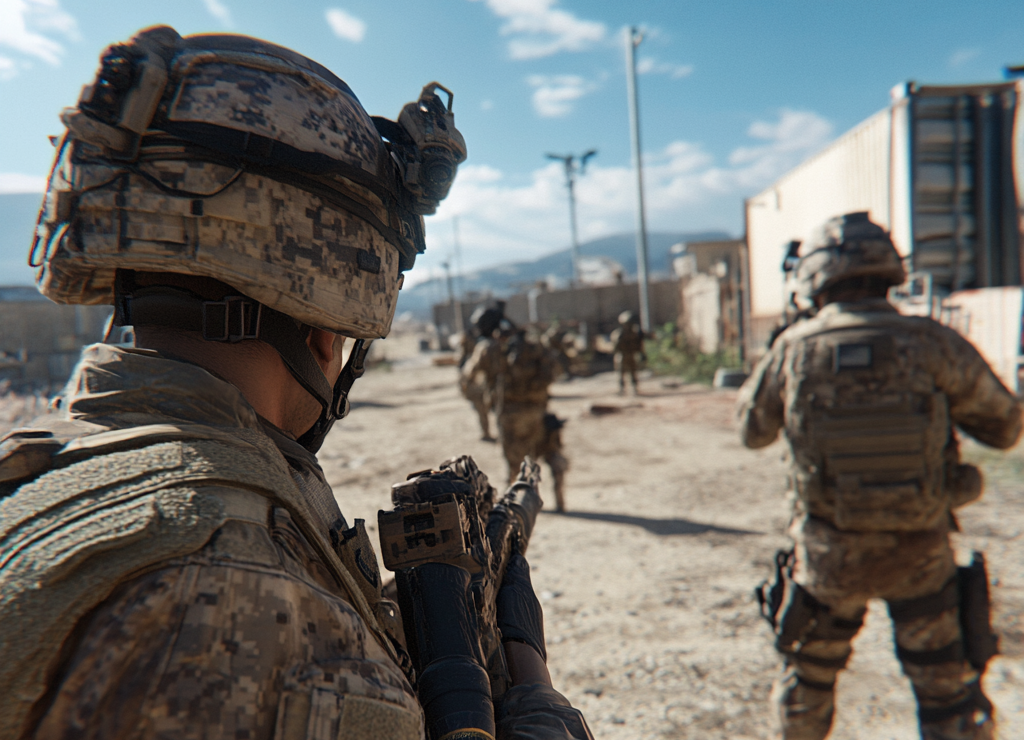Military Training and Simulation stands to gain the most in the next decade as technologies widen in scope and capability. Read on for an illustration on how VX60 Portable can take T&S beyond its current limits.
Scenario 1: The WiFi/5G Breakdown
At a U.S. military base, a squad of soldiers gathers for a multi-domain training exercise. They’re fitted with state-of-the-art AR visors, haptic suits, and biometric feedback sensors. The simulation is designed to test urban combat tactics with AI-controlled hostiles that adapt in real-time to the trainees’ actions.
The system is powered by a hybrid of Wi-Fi 6 and 5G, pulling high-bandwidth data from cloud servers, coordinating edge devices, and keeping multiple players in perfect sync.
Then it happens.
Latency spikes. The haptics lag behind visual cues. Command-and-control interfaces begin to stutter. One soldier’s visor disconnects entirely, leaving them effectively “blind” in the simulation. It turns out a nearby drone test, operating on a similar spectrum, caused significant interference.
The Result: The training session is aborted. A week of planning, hours of setup, and valuable time on mission-critical systems — wasted. Worse, a follow-up review reveals that the network instability introduced dangerous habits: soldiers hesitated in firefights, trusted delayed information, and failed to communicate clearly.
Scenario 2: The VX60 Portable Advantage
Now, picture a second scenario. The same team is deployed for training — but this time, they use VX60 Portable, a portable 60 GHz wireless networking system. This system provides ultra-high bandwidth, extremely low latency, and is immune to most common interference sources due to their short-range, directional beamforming design.
VX60 Portable’s hardware is set up in under an hour, creating a self-contained wireless environment around the training site—no dependence on base infrastructure, no overlapping commercial signals.
This time, everything works. Real-time video feeds from drone simulations sync seamlessly with visor overlays. Every shot and every movement is tracked and analyzed in the cloud with milliseconds accuracy. The AI adversaries behave smarter and faster, forcing the team to respond with precision.
The outcome: the soldiers complete the training with precise execution. After-action review highlights decision-making under pressure, areas soldiers needed to pay more attention to, the beauty of teamwork, and smooth comms. The commanding officer notes, “the network became invisible — which is exactly what you want in a good training environment.”
Why VX60 Portable Matters
Traditional wireless systems like Wi-Fi and 5G are excellent for general-purpose use. But military training demands more:
Latency sensitivity: AR/VR requires ultra low latency — VX60 Portable delivers.
High bandwidth: Multi-device simulations demand gigabits per second — VX60 Portable is built for that.
Interference resistance: VX60 Portable’s directional nature makes it far less susceptible to nearby signals.
Mobility and autonomy: VX60 Portable can be deployed anywhere — from urban lots to navy ships — with minimal infrastructure.
Conclusion: A Mission-Critical Upgrade
In an era where digital warfare is as real as boots on the ground, the infrastructure supporting military training needs to be bulletproof. While Wi-Fi and 5G offer convenience, they falter under the intense pressure of immersive, real-time training simulations.

Summer Sale on NOW!
VX60 Portable isn’t just a faster option — it’s a tactical advantage.